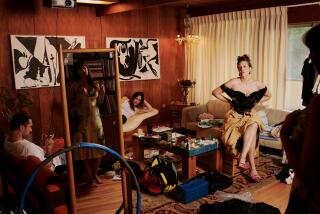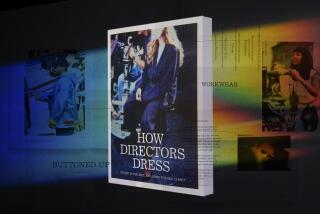Re-creating Liberace’s dress-for-excess world
“Too much of a good thing is wonderful,” declares Liberace in the closing minutes of “Behind the Candelabra.” The line, borrowed from Mae West, is a fitting description of the late pianist’s famously over-the-top aesthetic: In his long-running Las Vegas show, Liberace was known to make his grand entrance via bedazzled Rolls-Royce limousines and for wearing glitzy ensembles like star-spangled hot pants or a sequin-lined, white fox coat with a 16-foot train.
For the film’s costume designer Ellen Mirojnick and production designer Howard Cummings, tasked with re-creating Liberace’s “palatial kitsch” on a tight budget and even tighter schedule, it was more like, “Too much of a good thing can be a whole lot of work.”
Not that they’re complaining. “It was the most fabulous challenge that I have ever been given,” said Mirojnick, who has worked with Michael Douglas on projects dating to “Fatal Attraction.” Her to-do list included creating more than 120 period-appropriate custom looks to be worn by costars Douglas and Matt Damon.
PHOTOS: Hollywood backlot moments
Producer Jerry Weintraub was able to secure access to the archives of the Liberace Foundation, allowing Mirojnick to view the star’s elaborately embellished stage costumes up close.
From there, Mirojnick had just eight weeks of pre-production to design and manufacture replicas that would fit the smaller-framed Douglas. Liberace’s costumes, custom-made by an array of designers and covered in stones and crystals, could costs hundreds of thousands of dollars. They were also incredibly heavy, so an added challenge was finding lighter materials that would allow the actor to move freely. Swift decision-making was key throughout the process. “I didn’t get a chance to second-guess myself,” Mirojnick said.
When it came to Liberace’s offstage attire, Mirojnick was able to take more creative license, dressing him in a wardrobe of lush yet comfortable caftans and robes. “It made sense to me: When you take your costume off, you’d want to wear the least encumbered thing.”
Meanwhile, Cummings, who previously worked with Soderbergh on “Magic Mike” and “Contagion,” had to create and decorate 30 sets, including five of Liberace’s several dozen residences. Only one, a Chinese-themed Los Angeles penthouse, was able to be used in the actual production. The rest were re-created using sets or existing locations: Zsa Zsa Gabor’s home in Beverly Hills, Siegfried and Roy’s residence in Las Vegas and the high-roller Verona Suite at the former Las Vegas Hilton were all stand-ins.
Then it became a matter of filling out the locations with the glittery tchotchkes and exotic antiques that Liberace, a compulsive shopper, was so fond of. “He’d have a Louis the 15th desk and on top of it he’d have something he found in a thrift shop just because he thought it was pretty,” Cummings said. “He thought his mission in life was to bring beauty in the world. He was truly obsessed with it.”
Perhaps the greatest challenge for Cummings was finding enough chandeliers; one musical number alone required 11 of them.
The Liberace Foundation lent the production a great deal of original memorabilia, including several pianos, which came as a relief to Cummings. But serendipity also played a part. Cummings’ team just so happened to call the son of the man who originally made Liberace’s decadent Greek bathtub; he still had the original mold.
Another asset, said Cummings, was that Liberace was so extraordinarily well liked. “People would try to track me down, because they just wanted to be a part of the whole thing. He had that infectious exuberance.”
More to Read
The complete guide to home viewing
Get Screen Gab for everything about the TV shows and streaming movies everyone’s talking about.
You may occasionally receive promotional content from the Los Angeles Times.






